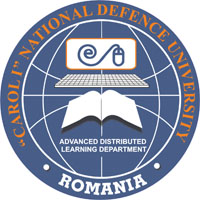ANALYSIS OF THE INFLUENCE OF THE TECHNOLOGICALLY – ENHANCED SOFTWARE ON TEACHING GRID - CONNECTED RENEWABLE ENERGY PLANTS BEHAVIOR
ANALYSIS OF THE INFLUENCE OF THE TECHNOLOGICALLY – ENHANCED SOFTWARE ON TEACHING GRID - CONNECTED RENEWABLE ENERGY PLANTS BEHAVIOR
Author(s): Ioana PorumbSubject(s): Education
Published by: Carol I National Defence University Publishing House
Keywords: education; electric distribution systems; power systems software; smart grid
Summary/Abstract: The increased adoption of both the renewable energy sources and energy efficiency has pushed European Union into adopting the EU Directive 20-20-20, which constitutes a decisive action towards renewable energy and energy efficiency adoption within electric power systems. The area of interest for electrical engineering students is very broad, it covers a series of topics for the electric power systems, like calculation of losses, reliability, and power quality. The power generation of grid - connected photovoltaic plants wind farms is continuously increasing all over Europe, with capacities attaining values of hundreds of megawatts, thus making these plants a crucial part of the future electric energy system and Smart Grids. Advanced electrical devices can be used to increase transmission capacity, improving stability and dynamic behaviour, and ensure a better quality of energy by controlling several parameters. Electrical engineers need to solve the issue of operating traditional electric power systems using the latest technological developments, thus leading to an inherent bottle neck if not using additional ower systems analysis software. Current paper deals with the issue of enhancing electrical engineers analytical capabilities using friendly-interfaced software, with respect to traditional analytical methods. In the first section, a general analysis was performed, aimed at identifying the current state-of-the art of analytical methods and software available for both scholars and professionals. An example was built, depicting a real electric distribution system, in order to create an array of possible issues and solutions which were analysed both traditionally and with dedicated software, and of which differences were highlighted.
Journal: Conference proceedings of »eLearning and Software for Education« (eLSE)
- Issue Year: 11/2015
- Issue No: 03
- Page Range: 66-71
- Page Count: 6

